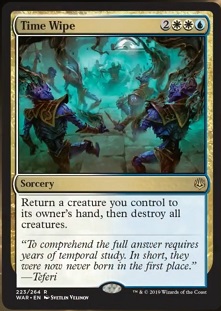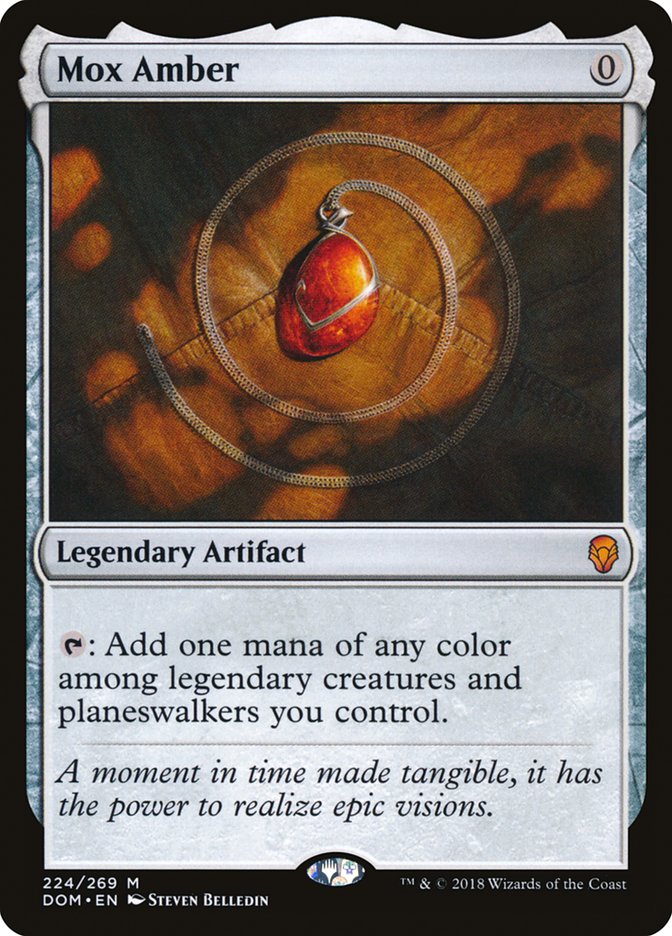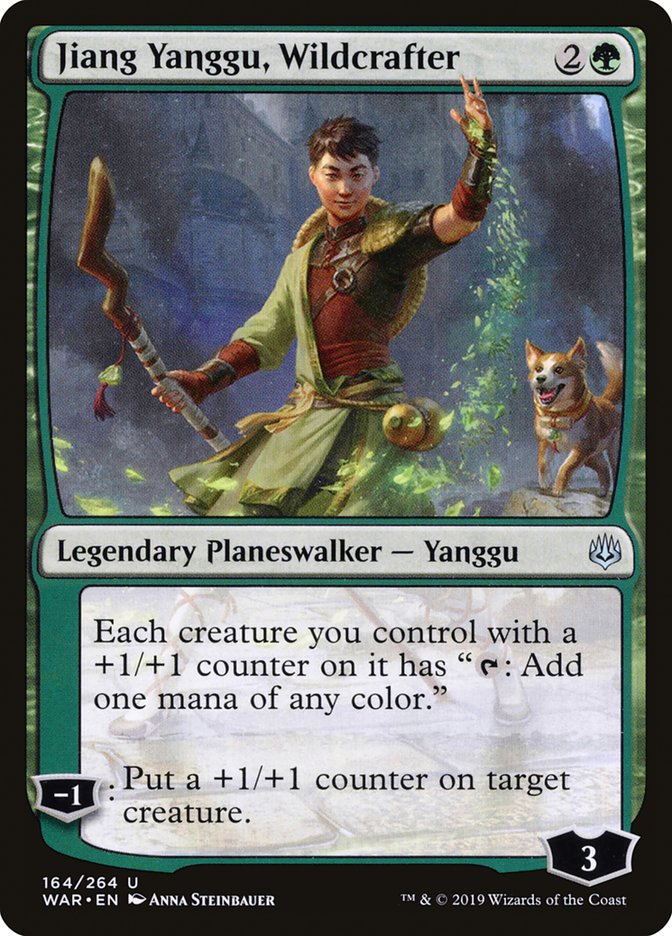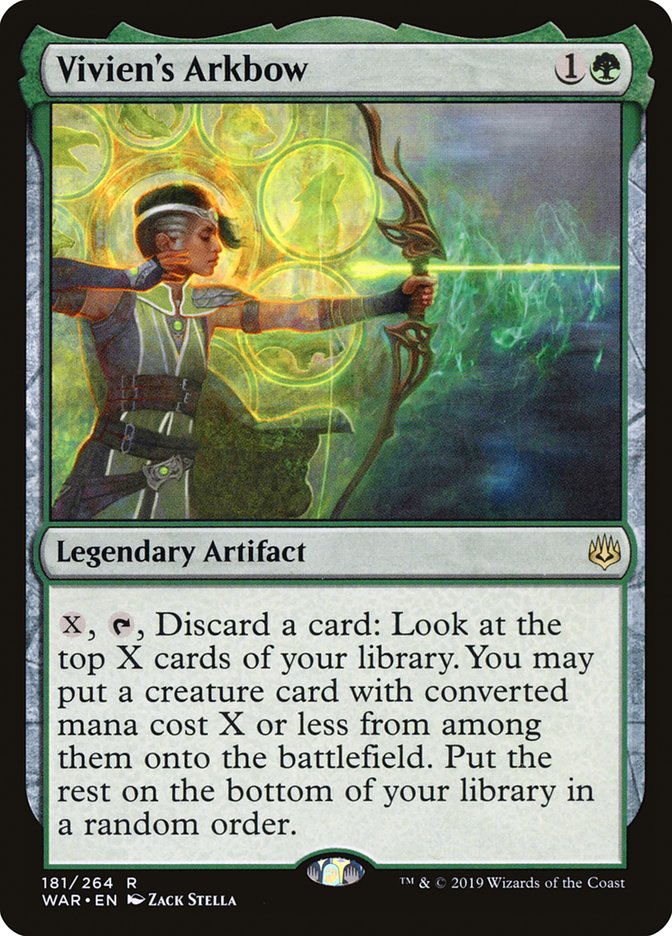To the best of my knowledge, everyone has always loved Fblthp. Now, we get to play with him. It’d be disappointing if Flbthp got his own card and it wasn’t playable, but fortunately, that’s not what happened. Instead, we get an “improved” blue Elvish Visionary.
First of all, I love this design. Obviously, Fblthp isn’t a powerful creature, so it’s just a 1/1 that draws a card, but it needs to be weirder than that to be a legendary creature. So it has this bonus text about drawing two cards if it comes from your library, which has a good “Where did this come from? He could be anywhere!” feel to its weirdness, and the text about shuffling it into your library kind of but not exactly turns spells that target it into Totally Lost, but even more lost.
So how good is Fblthp? Well, its base power level is somewhere around Elvish Visionary, of course. Most of the time, you’re spending two mana for a 1/1 and a card. A lot of the strength of Elvish Visionary comes from tribal synergies (though it has performed outside of tribal decks in decks that are very interested in value creatures, most notably Rally the Ancestors), but Fblthp also has its own synergies — not that I expect you to build a competitive Homunculus deck in any format, but that Fblthp’s legendary status is comparably valuable.
What about the rest of the text? Honestly, I don’t think any of it matters much. If my opponent wants to target my 1/1 that drew a card, I don’t really care what happens to it beyond that. Most of the time, when they do that, they’d be doing it to get a secondary benefit from a spell, like gaining two life from Moment of Craving, which this ability would prevent, so I guess it’s largely positive, especially since it only says “spell,” not “spell or ability,” so you can still target your own Fblthp with something like Restoration Angel.
As for drawing two cards, I think it’s easy to see this card and get hung up on chasing that dream. I do think this text makes Fblthp a reasonable inclusion in some less tribal Collected Company decks in Modern, and a very easy addition to any Prime Speaker Vannifar decks, but I suspect Fblthp will be drawing one card a large majority of the time unless War of the Spark contains some other card that makes this happen more. That said, I’m definitely satisfied with just getting one card with my two-mana 1/1.
So, cards like this have some pedigree, but where should you use this and what should you expect from it?
The first thing that jumps to mind is Mox Amber. We knew Mox Amber was going to get a big boost in this set because of all the extra planeswalkers, especially at three mana (and maybe we’ll even get a cheaper one?), but Mox Amber is only really great if you can enable it with one- or two-mana legendary creatures, unless you’re doing something weird with it like the Sai, Master Thopterist / Paradoxical Outcome deck.
Not only is Fblthp a two-mana legendary creature to enable Mox Amber, it’s a two-mana legendary creature that your opponent really doesn’t want to have to put effort into removing and that will be reasonable to cast in almost any blue deck that needs a legendary creature. This is approximately the best card that could realistically see print for enabling Mox Amber, short of a legendary Trinket Mage.
As somehow who’s willing to go very far out of my way to play Mox Opal in Modern, I’m definitely going to try to find ways to use Mox Amber in Standard. In fact, I’ve been trying to find ways to use Mox Amber and Mox Opal together. My most recent attempt came up a little short, and this might be exactly what I was looking for. This is a rough draft, just slotting Fblthp into a list I was literally just brewing up yesterday, but consider something like this:
Creatures (21)
- 1 Isamaru, Hound of Konda
- 1 Rhys the Redeemed
- 3 Kytheon, Hero of Akros
- 4 Thraben Inspector
- 4 Spell Queller
- 1 Sram, Senior Edificer
- 2 Sai, Master Thopterist
- 2 Lavinia, Azorius Renegade
- 3 Fblthp, the Lost
Planeswalkers (6)
Lands (17)
Spells (16)

It’s not easy to enable both Mox Opal and Mox Amber at the same time – they both require a lot of commitment to opposing synergies. However, Mox Amber does help enable Mox Opal, and both cards are extremely powerful, so I’m very interested in finding a way to do it. Smuggler’s Copter feels like a pretty big breakthrough in making it all work, since it’s an artifact that plays well with arbitrary cheap legendary creatures that I want to have on the battlefield, and Thraben Inspector is another key piece of that puzzle.
Teferi, Time Raveler is amazing and it’s near the top of my list of best cards in the set. It shines here, as this deck is largely about casting planeswalkers on Turn 2 and protecting them, and Fblthp is a great friend of Teferi, Time Raveler in any format. It’s always great to cast a good blocker the turn before casting a planeswalker, but if your opponent isn’t running the kind of deck that casts early creatures, Flbthp also gives you a target to get value by using Teferi’s -3 on your own creature, drawing a card from Teferi and another when you replay Fblthp.
While Fblthp’s floor power level is pretty high in a vacuum and it’s the perfect extra piece in a synergy-driven deck, we also have to consider its power in context of the format where it will be played. While War of the Spark might totally change the way that Standard looks, it’s definitely noteworthy how well it lines up right now, as well as how things only look to improve.
Right now, Fblthp would be a great earlier blocker for a control deck against both Mono-White and Mono-Red Aggro decks. Yes, Goblin Chainwhirler and Benalish Marshal both basically invalidate it, but when you’re on the play and you can counter those, or when your opponent doesn’t draw them, they might just have to trade a card for it, and even when it doesn’t go that way, you’ll still at least save some life with your blocker.
However, things only look to get better for Fblthp. First, you’re more likely to have planeswalkers in your deck, which means that blocking early attackers is even more valuable. Second, your opponent is more likely to be using creatures to attack planeswalkers, which means more opportunities to get value by blocking early. Third, this set contains arguably the two best two-mana Diabolic Edict effects in Modern in Liliana’s Triumph and Angrath’s Rampage. A value creature like Fblthp is the best way to preempt these powerful edicts.
Historically, Elvish Visionary’s been most likely to succeed when there’s an expectation that you might draw multiple cards off it, thanks to synergies like Wirewood Symbiote or Rally the Ancestors. I already mentioned the fringe use with Teferi, Time Raveler, but an even more popular use is the synergy with Time Wipe.

Time Wipe is an awesome sweeper that lets you play a few creatures in your deck that’s looking to play a sweeper without losing your own card, but these decks aren’t generally looking to take advantage of that anyway, because playing a few creatures largely just enablers your opponent’s removal spells.
With Fblthp, I’ll be happy any time my opponent spends mana on a removal spell. Even if that would otherwise have been a dead card, I’m not sad that I gave them a way to use it; I’m happy that I got them to spend some mana (and a card that they might have been able to discard to Chemister’s Insight or something), and if they don’t kill it, now my sweeper also draws a card. This is a nice, simple, low-investment synergy that can both protect planeswalkers and boost the value you get out of your Time Wipes in Azorius Control.
While Fblthp is a great, powerful, versatile card, I’d caution that you should avoid including Fblthp in aggressive decks unless you have an explicit synergy. It’s easy for control decks to take advantage of the speed bump, but Fblthp shouldn’t be expected to meaningfully impact the battlefield outside of a single block, so if your deck is interested in attacking, it would not be a good idea to play Fblthp. Do not, for example, consider including Fblthp in a Mono-Blue Curious Obsession deck because it would be horrible.
That’s not to say that Fblthp is only good in Azorius. In fact, it’s possible that Fblthp’s best home is actually in Simic.
Jiang Yanggu, Wildcrafter loves Fblthp, since it’s a creature that will reliably be on the battlefield and not otherwise doing anything, and it’s perfect to add a counter to and then use as a mana creature. Vivien’s Arkbow is a really weird card that’s difficult to evaluate, but it’s clearly at its best if you have a lot of mana and a lot of creatures in your deck, which means that it plays well with Jiang Yanggu, Wildcrafter, and it also happens to be the best way to draw two cards off Fblthp in Standard.
What might a deck that uses these synergies look like?
Creatures (25)
- 4 Llanowar Elves
- 1 Carnage Tyrant
- 2 Marwyn, the Nurturer
- 1 Zegana, Utopian Speaker
- 4 Hydroid Krasis
- 1 End-Raze Forerunners
- 4 Incubation Druid
- 4 Paradise Druid
- 4 Fblthp, the Lost
Planeswalkers (6)
Lands (22)

This list is rough but highlights some other good ways to use Fblthp – it’s a low-investment way to load counters onto something with Jiang Yanggu, Wildcrafter or Hadana’s Climb; an easy extra body for Growing Rites of Itlimoc; and a great enabler for legendary sorceries. I don’t think this deck is quite at the right level for Kamahl’s Druidic Vow – it’s close – but I think I’d just rather be casting Karn’s Temporal Sundering at that point anyway.
If you wanted to learn further into legendary sorceries, a Dimir deck with Rona, Disciple of Gix might be the way to go.
Creatures (15)
- 3 Rona, Disciple of Gix
- 3 Isareth the Awakener
- 4 Lazav, the Multifarious
- 1 The Haunt of Hightower
- 4 Fblthp, the Lost
Planeswalkers (4)
Lands (24)
Spells (17)

This is another rough list, but there are some pretty nice graveyard synergies in this deck, with surveil helping to set up Isareth the Awakener, Rona, The Eldest Reborn, and Yawgmoth’s Vile Offering, and Mox Amber actually looks good, as this list manages to include both cheap enablers and expensive payoffs. Fblthp shines as a way to generate value off Rona and Isareth, as it can easily chump block to set up those abilities even when your specific graveyard enablers don’t happen to hit it.
It’s hard to explore everything that Fblthp can do, since it’s such a versatile card, but as someone who loves value, playing creatures defensively, and blue creatures, as simple as Fblthp is (if you ignore all the weird text), I’m excited to play with it.







